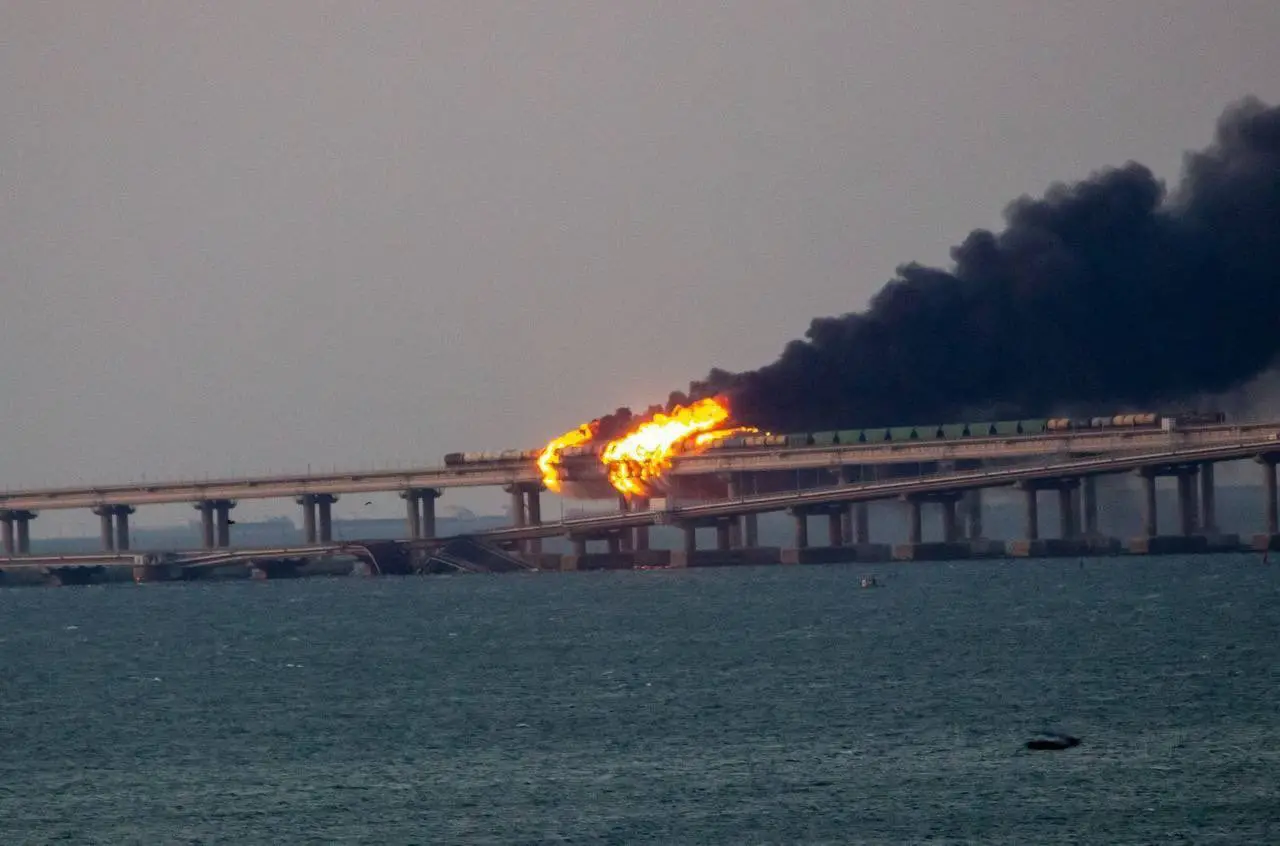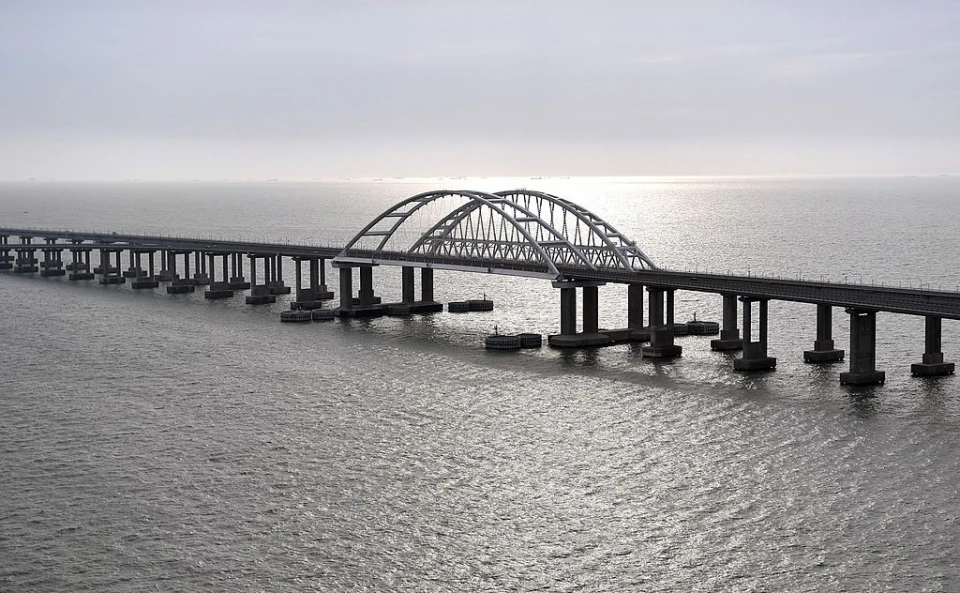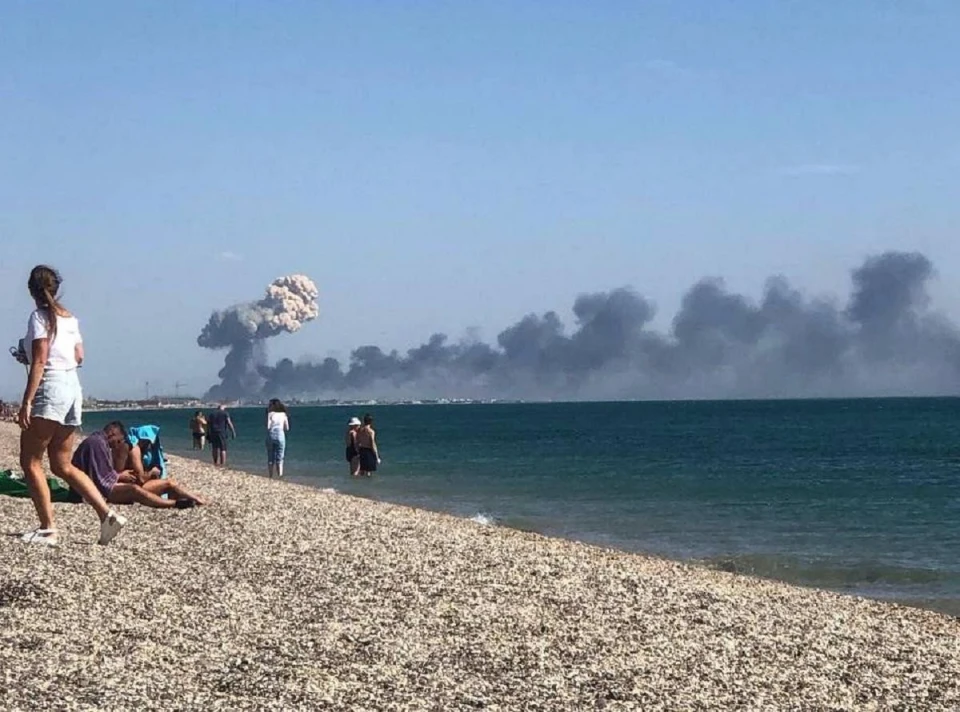Military expert says what should be done to speed up de-occupation of Crimea

Military expert Pyotr Chernik has said that the Crimean bridge should be destroyed by dozens of long-range missiles
In order toliberate the temporarily occupied Crimea from the Russians, the Armed Forcesshould destroy not one or two, but simultaneously several dozens of sections ofthe Crimean bridge. This can be achieved with a salvo of dozens of modernlong-range missiles, which are not in Ukraine's inventory.
This wastold by military expert Petro Chernik in an interview with YouTube channel Fabrika noviny.
The analystcalled Crimea the largest military bridgehead in the world and the mostmilitarised object because of the saturation of the peninsula with all possiblevarieties of weapons. And reminded that all these weapons are 90% delivered byone logistical artery — the railway via the Crimean bridge, as it is expensiveand unprofitable to transport weapons by trucks.
"Forexample, one KamAZ-4310 or Ural-4320 truck can conditionally take on board amaximum of up to 50 152-mm calibre shells or up to 30 shells for the BM-21 Gradsystem. While a 50-tonne wagon can take 500 shells and up to 300 rockets forthe Grad system, respectively. And one railway echelon can take 30 to 70wagons. Therefore, the railway is a very serious logistical artery. As soon asit can be destroyed, Crimea will start to "suffocate", — believesPyotr Chernik.
The expertrecalled that the length of the Crimean bridge is 18 kilometres, so, in hisopinion, the Armed Forces need to destroy not one or two sections of it, butseveral dozen sections at a time, and then take this section under constantfire control, so that the Russians could not quickly restore it.
"Evenif the bridge manages to be damaged so seriously, Crimea will start"suffocating" not immediately, because the peninsula has enough food,medicine and drinking water. If conditionally today a few dozen sections falldown and the Russians are unable to repair the bridge in a few months, the reallogistical famine in Crimea will not begin until February 2024," theanalyst said.
Only dozens of missiles will destroy the bridge
PyotrChernik also said that long-range missiles of various types can seriouslydamage the Crimean bridge. According to him, first of all, these are StormShadow/SCALP already transferred to Ukraine by Western partners, as well asATACMS missiles in a long-range version up to 300 kilometres with a penetratingwarhead of 227 kg. In addition, the analyst believes that Ukrainian R-360Neptun missiles adapted for strikes against ground targets can theoreticallycope with this task.
At the sametime, according to the expert, the level of massiveness of the strikes is noless important. He noted that two or three missiles can only damage the bridge,while a simultaneous salvo of several dozens of missiles is needed tocompletely destroy it and put it out of operation for a long period of time.Petro Chernik noted that to perform such tasks, today Ukraine does not haveenough and necessary types of weapons.
"TheUSA has transferred to Ukraine 20 ATACMS missiles of MGM-140A Block 1modification with M39 cluster warhead, loaded with M74 submunitions. This is anexcellent missile for destroying airfields or damaging clusters of equipment,warehouses, control centres, etc., but it flies a maximum of 165 km. Let meremind you that from (Ukrainian-controlled — Ed.) Gulyaypole in theZaporizhzhya region to Kerch in a straight line is 250 kilometres. And Iemphasise that we need several dozens of missiles, then there will be aresult," the expert believes.
At the sametime, Petro Chernik does not rule out that the Ukrainian military leadership isstudying the possibilities and preparing new, more massive strikes on theCrimean bridge.
"Thefirst steps in this direction have been made — Storm Shadow/SCALP have beenoperating for a long time. ATACMS missiles have successfully worked on twoenemy army airfields in Berdyansk and Lugansk. Everything that is happening nowis probably a probing, pen test and study of the Russian air defence as to whatwill be the response to the arrival of two missiles. After all, the salvo muststill be successful — launching 30 missiles, of which 20 will be shot down and10 will remain, will not give the desired result. For an effective strike outof 30 missiles, 5-6 missiles can be lost, and the rest must definitely reachthe target. I think that now there is an examination of the target and its airdefence cover," summed up Petro Chernik.
Ukraine's first use of US ATACMS missiles
On 17October, the AFU Special Operations Forces conducted theDRAGONFLY operation to hit airfields in Berdyansk and Luhansk temporarilycaptured by the Russians. As a result of ATACMS missile strikes on theairfields, seven Ka-52 Alligator helicopters and two Mi-8 helicopters weredestroyed. Another 15 helicopters — eight Ka-52s and seven Mi-8s — weredamaged.
Rocket attacks on the Crimean Bridge
On themorning of 8 October 2022, a powerful explosion occurred on the Crimean Bridge.As a result of the attack, two spans of the roadbed collapsed and the railwaytrack was damaged over a kilometre long. The flames from the fire spread to thefuel tanks of a railway train that was travelling along the parallel railwaytrack of the bridge.
The head ofthe Security Service of Ukraine, Vasyl Malyuk, said that the explosion on theCrimean bridge wasorganised by Ukrainian special services. SBU officers wrapped film aroundmetal cylinders with a mixture of hexogen to discreetly transport 21 tonnes ofTNT equivalent explosives to the middle of the bridge. Scanners at checkpointsfailed to recognise the explosives in the truck.
The secondattack on the Crimean Bridge took place on 17 July 2023 — the symbol of Putin'sregime was attacked by surface drones. As a result of the attack on the bridgespans from the Crimean side, the roadbed was damaged, the span collapsed, theslab moved downwards, and the jackhammer was twisted.
Later, the SecurityService of Ukraine said that the bridge was attacked by drones with an increasedamount of explosives up to 850kg of hexogen. They also modernised the controlsystem, resulting in a qualitatively new model of the surface"avenger".














